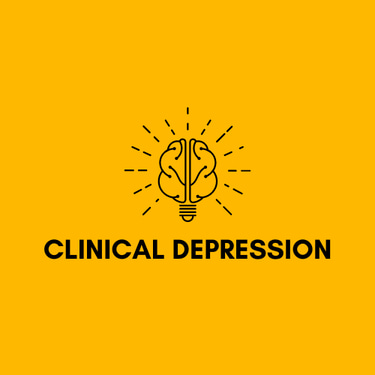For Questions: Text (833)233-0869
Remote Depression Therapy: A Comprehensive Guide to Managing Depression from the Comfort of Home


Depression is a pervasive mental health condition that affects millions of people worldwide. Its impact on daily life can be profound, making it difficult to function at work, maintain relationships, and even carry out simple tasks. However, with the advent of remote depression therapy, more people now have access to the help they need without leaving their homes. This article explores the concept of remote depression therapy, its benefits, how it works, and what you should consider when seeking treatment.
What is Remote Depression Therapy?
Remote depression therapy, also known as teletherapy or online therapy, is a form of mental health treatment that allows individuals to connect with licensed therapists through digital platforms. These platforms may include video calls, phone calls, or even text-based communication. The goal is to provide the same level of care and support that one would receive in a traditional in-person therapy session, but with the added convenience of being able to access it from anywhere.
The Rise of Remote Therapy
The concept of remote therapy is not entirely new, but it gained significant traction during the COVID-19 pandemic. As people were forced to stay at home due to lockdowns and social distancing measures, the demand for mental health services skyrocketed. In response, many therapists transitioned to online platforms to continue providing care. This shift not only made therapy more accessible but also highlighted the effectiveness of remote treatment.
Benefits of Remote Depression Therapy
Accessibility: One of the most significant advantages of remote depression therapy is accessibility. People who live in rural or underserved areas may not have easy access to mental health services. Remote therapy breaks down geographical barriers, allowing anyone with an internet connection to receive care.
Convenience: Remote therapy offers unparalleled convenience. You can schedule sessions around your daily life, eliminating the need to travel to a therapist's office. This flexibility is particularly beneficial for those with busy schedules, physical disabilities, or those who simply prefer the comfort of their own home.
Privacy: For some individuals, the idea of walking into a therapist's office can be daunting. Remote therapy offers a higher level of privacy, as sessions can be conducted in a private setting of your choice. This can help reduce the stigma associated with seeking mental health treatment.
Cost-Effective: Remote therapy can be more cost-effective than traditional therapy. Many online platforms offer lower rates, and the absence of travel costs can make treatment more affordable.
Variety of Options: Remote therapy platforms often provide a wide range of therapists to choose from, allowing you to find a professional who best suits your needs. Whether you're looking for a therapist who specializes in cognitive-behavioral therapy (CBT), mindfulness-based therapy, or any other approach, you're likely to find a match online.
How Remote Depression Therapy Works
The process of engaging in remote depression therapy is straightforward. Here's a step-by-step guide on how it typically works:
Choosing a Platform: The first step is to choose a remote therapy platform. There are many options available, including well-known services like BetterHelp, Talkspace, and MDLive. When selecting a platform, consider factors such as cost, the types of therapy offered, and the qualifications of the therapists.
Creating an Account: Once you've chosen a platform, you'll need to create an account. This usually involves providing some basic information about yourself, your mental health history, and what you're looking for in a therapist.
Matching with a Therapist: After creating your account, the platform will typically match you with a therapist based on your needs and preferences. Some platforms allow you to choose your therapist, while others will make a recommendation.
Scheduling a Session: Once matched with a therapist, you can schedule your first session. Most platforms offer flexible scheduling options, allowing you to choose a time that works best for you.
Conducting the Session: Sessions are conducted via video call, phone call, or text, depending on your preference. Video calls are the most common method, as they allow for face-to-face interaction, which can be crucial in building a therapeutic relationship.
Follow-Up and Progress: After your session, your therapist may provide follow-up tasks, such as journaling, practicing mindfulness exercises, or reading materials. Regular sessions are typically scheduled on a weekly or bi-weekly basis, depending on your treatment plan.
Is Remote Therapy Effective for Depression?
One of the most common questions about remote depression therapy is whether it is as effective as in-person therapy. Research indicates that for many people, remote therapy can be just as effective as traditional therapy. A study published in the Journal of Affective Disorders found that online cognitive-behavioral therapy (CBT) was as effective as face-to-face CBT in treating depression and anxiety.
However, the effectiveness of remote therapy can vary depending on the individual and the severity of their depression. For those with mild to moderate depression, remote therapy is often an excellent option. However, individuals with severe depression or suicidal thoughts may require more intensive, in-person treatment.
Potential Challenges of Remote Depression Therapy
While remote depression therapy offers many benefits, it also comes with some challenges:
Technical Issues: A stable internet connection is essential for remote therapy. Technical issues such as poor connection quality or software glitches can disrupt sessions and hinder communication.
Lack of Physical Presence: Some individuals may feel that the lack of physical presence makes it harder to connect with their therapist. Non-verbal cues, such as body language, can be more challenging to interpret over a screen.
Distractions: Conducting therapy sessions at home can introduce distractions, such as household noise or interruptions from family members. It's important to create a quiet, private space for your sessions.
Confidentiality Concerns: While remote therapy platforms are designed to be secure, some individuals may have concerns about the confidentiality of their sessions. It's important to choose a reputable platform that complies with privacy regulations like HIPAA.
Choosing the Right Remote Depression Therapy Platform
When selecting a remote depression therapy platform, it's essential to consider the following factors:
Licensing and Credentials: Ensure that the platform employs licensed therapists who are qualified to treat depression. You can usually find information about a therapist's credentials on the platform's website.
Cost and Insurance: Consider the cost of therapy and whether the platform accepts insurance. Some platforms offer sliding scale fees based on income, making therapy more affordable.
User Reviews: Reading user reviews can provide insight into the experiences of others who have used the platform. Look for reviews that mention the quality of care, ease of use, and customer support.
Therapeutic Approaches: Different therapists may specialize in various therapeutic approaches. If you have a preference for a specific type of therapy, such as CBT or psychodynamic therapy, ensure that the platform offers it.
Availability of Therapists: Check the availability of therapists on the platform. Some platforms have a large pool of therapists, while others may have limited options, which could affect your ability to find the right match.
How to Get the Most Out of Remote Depression Therapy
To maximize the benefits of remote depression therapy, consider the following tips:
Set Clear Goals: Before starting therapy, think about what you want to achieve. Setting clear, realistic goals can help guide your treatment and provide a sense of direction.
Be Honest and Open: The success of therapy depends on your willingness to be honest and open with your therapist. Share your thoughts, feelings, and concerns, even if they're difficult to talk about.
Stay Consistent: Consistency is key to effective therapy. Attend your sessions regularly and complete any follow-up tasks your therapist assigns.
Create a Conducive Environment: Choose a quiet, private space for your sessions where you won't be interrupted. This will help you focus and get the most out of your therapy.
Practice Patience: Therapy is a process, and progress may take time. Be patient with yourself and trust that with persistence, you will see improvement.
When to Consider In-Person Therapy
While remote depression therapy is effective for many people, there are situations where in-person therapy may be more appropriate:
Severe Depression: Individuals with severe depression, especially those experiencing suicidal thoughts, may require more intensive, in-person treatment.
Crisis Situations: In cases of crisis, such as a mental health emergency, in-person therapy or immediate intervention may be necessary.
Preference for Face-to-Face Interaction: Some individuals may simply prefer the face-to-face interaction that in-person therapy provides. If you feel that you would connect better with a therapist in person, it may be worth considering.
Complex Mental Health Issues: Individuals with complex mental health conditions, such as co-occurring disorders or severe trauma, may benefit from the additional support that in-person therapy can offer.
Conclusion: The Future of Mental Health Care
Remote depression therapy has revolutionized the way we access mental health care, making it more accessible, convenient, and flexible. As technology continues to evolve, the options for remote therapy will likely expand, providing even more opportunities for individuals to receive the help they need.
Whether you're struggling with mild depression or seeking ongoing support, remote therapy offers a viable option that can fit into your lifestyle. By understanding how remote depression therapy works and how to choose the right platform, you can take the first step toward managing your mental health in a way that suits your needs.
If you or someone you know is experiencing depression, consider exploring the options available for remote therapy. With the right support, recovery is within reach.
©2025
Clinical Depression
For Questions: Text
(833) 233-0869
